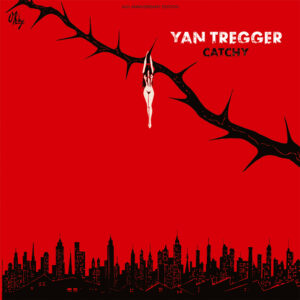The world of library music is still a domain to be explored. Like the muzak of decades ago, it is purely utilitarian and has only one function, to illustrate images. This musical genre, which for a long time remained confidential, has been enjoying renewed interest in recent years. For behind these LPs lie creative, often avant-garde composers who do not hesitate in mixing up their jazz influences with early electronic sounds and emerging genres such as psychedelic music.
When Jungle Obsession was composed in 1971, Nino Nardini and Roger Roger had already known each other for a long time and together – or each on their own under aliases (George Teperino and Cecil Leuter) or their real surnames – had filled the radio and television programmes of the ORTF with their royalty-free compositions. Ever inseparable since they met in high school at the end of the twenties, the two musicians will cross the century and soak up like two sponges all the musical genres that have evolved over the decades: orchestral jazz, swing, Latin-American music, musique concrète, rock’n’roll, pop, psychedelia, but also French chanson, accompanying great stars such as Edith Piaf as conductors at Radio Luxembourg.
Joined by a third equally inventive composer, Eddie Warner, the three of them created Ganaro Studios. Set up in the Chevreuse valley, their lair was to become a place for experimentation of all kinds and innovative sound discoveries that they were to distribute on specialized labels such as Eddie Warner’s: L’Illustration Musicale (IM), or Chappell Music, Crea Sound, Mondiophone, Musax, Hachette, etc.
Jungle Obsession, published in 1971, was commissioned by the French label Neuilly and presents itself as their own musical vision of The Jungle Book. In the early seventies, exotica had long since gone out of fashion, but Nardini and Roger were to compose one of the masterpieces of the genre, offering exotic and refined pop that was conducive to the most overflowing imagination. Close to psychedelia on some tracks (Bali Girl and Mowgli), the two composers also use subterfuges of their predecessors from the fifties such as bird songs and jungle animal cries (Murmuring Leaves), tribal percussion (Jungle Obsession) and female choirs of sacred music (Jungle Spell) without forgetting the romantic melodies of Bagheera, the main title of this album.
Two bonus tracks enrich this monumental and cult exotic work which takes us far away, to faraway places we wish we’d never leave: Safari Park and Tropical.
Erwann Pacaud





